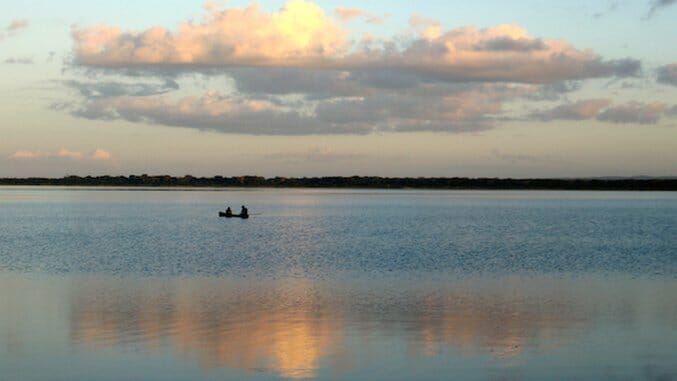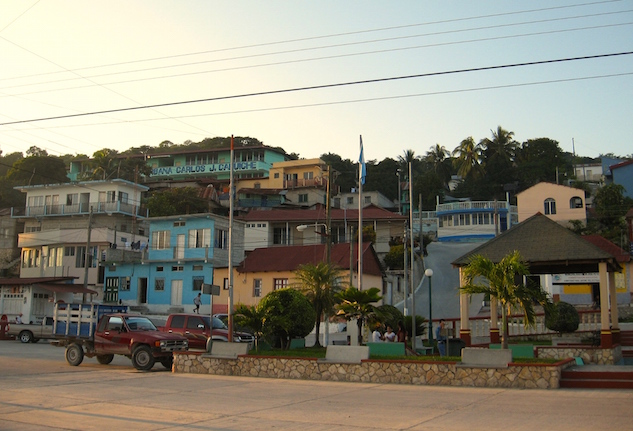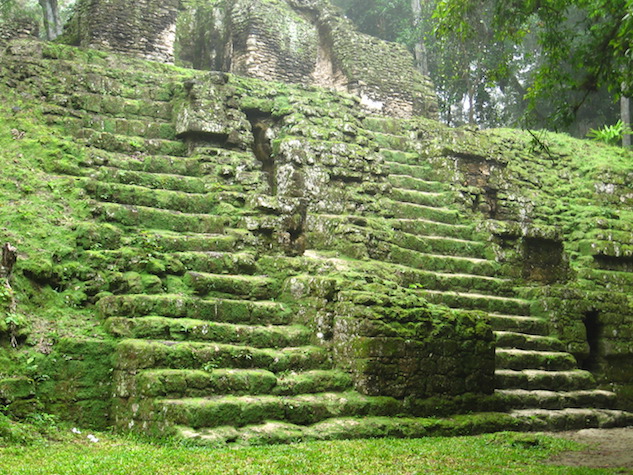Breaking Language Barriers in Guatemala
How to learn the language while in the element, without Rosetta Stone.
Photos: Alexis Steinman Travel Features
“Tienes novillo?”
I flipped furiously through my Spanish-English dictionary to decipher my host mother’s question. I knew that “tienes” meant “you have.” Novicio, noviembre. Found it: novillo = bull. Strange, she must think Seattle is cattle country.
“No tengo un novillo.”
Frowning, she replied, “lo siento” (I’m sorry). Confused, I recounted the tale to my tutor. I asked if Guatemaltecos think all Americans own cows to feed our hamburger obsession. She laughed uproariously, explaining that Florinda, my host mom, meant novio: a boyfriend. I would never forget that word, having grasped its definition in the real—albeit, embarrassing—world rather than a classroom setting.
This was learning Spanish, Guatemala-style.
Just as Honduras is known for scuba-certification and Belgium for beer-tasting, Guatemala is the go-to spot to learn Spanish. Guatemala’s language schools are what you make of them; if you are up for studying and practicing, you can learn surprisingly fast thanks to four hours a day of one-on-one lessons. For full-on immersion, students can choose to live with local families. Starting at only $160-a-week classes, room and board—that’s a better deal than Rosetta Stone, and way more stimulating than staring at a computer screen.
Off-Course Learning

Most students opt for the cobblestoned charm of Antigua or the hippie-dippy enclaves along stunning Lago Atitlan. Eager for intensive immersion, I opted for a secluded town where I wouldn’t be distracted by other English-speaking travelers. I chose the rustic village of San José, in the remote, Northern department of Petén. San José is a quaint, hillside pueblo on the banks of Lago de Petén Itza, a beautiful lake that lives up to its name—itza means “enchanted waters” in Mayan. In spite of its proximity to the epic, and oft-visited Mayan ruins of Tikal, San José has remained refreshingly un-touristy and unmodernized due to the limited tourist amenities.
San José is paradise for those who want to get lost; every traveler I met throughout my trip had never heard of the hidden gem. On the winding streets, clucking chickens and grunting pigs wander about freely. Friendly villagers—who are of mostly Mayan decent—greet each other by name and women balance buckets of corn atop their heads to make masa at the communal mill.
Lesson Plan

The author and her instructor at Escuela Bio-Itza
My school, the Escuela Bio-Itza, boasted an open-air classroom with ceiling fans and a wraparound view of the lake; think island bar without the buckets of beers. In spite of the laid-back setting, the teachers were utterly professional. I hit the educational jackpot with my tutor, Marisol. Although Marisol had traditional Mayan features—braided, black hair, a round face, almond eyes—she was anything but typical. Many 24-year old Guatemaltecas are married with multiple children. Marisol was a single lady studying law. Her specialty was women’s rights, an urgent field considering my Guatemala guide book’s sidebar on femicide.
My daily, one-on-one instruction included vocabulary, grammar, verbs and conversation. Each teacher tailors the lessons to the student’s needs and provides pertinent homework to accelerate the learning. My fluency in French boosted my vocabulary skills beyond a beginner level, so I was given magazine articles to summarize at night. At first, it was a slow slog since I had to look up every other word, but, by the end of two weeks, I was reading in Spanish. Marisol’s intelligence was infectious. Our conversations were mutually educational with us both sharing cultural anecdotes and historical tidbits. Learning together, the lines between teacher and student blurred

The author’s host siblings
Family Affair
My host family, the Gonzalez’s, lived on a secluded hill peppered with palm trees. Although their home was primitive—cinder blocks, corrugated metal roof, and dirt floors—their property had a spectacular view and an outdoor shower. Florinda was an excellent cook, known for effortlessly whipping up a variety of simple, yet hearty meals with local fruits, frijoles, tortillas and eggs.
Friendly and welcoming, her teenage children were patient with my stammering Spanish, inviting me to watch TV with them in the living room hammocks. Florinda even splurged on toilet paper—the others used newspaper—to soften the shock of the outhouse. At night, the house would be locked to prevent burglars, a fact I learned when thwarted from taking a midnight pee my first night. When I queried Florinda about it, she gave me a pitcher for future nocturnal tinkles.
Charitable Education
More than a school, the Escuela Bio-Itza is also a nonprofit organization focused on land conservation, ecology and the preservation of Mayan culture. Their endeavors include a women’s cooperative that makes homeopathic beauty products. Escuela students volunteer by weeding the school’s herb garden and mixing soap and shampoo, learning the healing properties of medicinal plants in the process. In addition, a student’s tuition is divided between the host family, the teacher, and the association, therefore helping many members of the community.
After-School Activities
The Escuela offered a variety of afternoon activities to give a glimpse into local life. Like the school, each project was relaxed, intimate, and educational. Minda, an Escuela tutor’s grandmother, taught us traditional embroidery. Wrapped around my amateur fingers, her wrinkled hands guided my needle to shape a colorful monja blanca, the national flower. My host mother, Florinda, led a cooking class where we rolled and stuffed empanadas side-by-side.
When not gardening or sewing, afternoons in San José were spent at the tranquil Lake Petén Itza, an idyllic spot for afternoon swims, watching fishermen float by, or lakeside naps. The surface is so glassy the water is a mirror image of the clouds above.
Eateries are limited in San José save for some food vendors along the lake. We studied at local café, Chaltun-h’a, where the Australian owner had terrific tales about her marriage to a local hombre. Walk 10 minutes West to Hotel Bahia Taitza to taste seafood and wood-fired pizza at their restaurant.
San José is famous for its Halloween festival, where preserved skulls are paraded through town. During my stay, I was lucky to experience Quema del Diablo, the Burning of the Devil, on Dec. 7, a yearly, Guatemala-wide tradition where trash is burned as a symbolic, ritual cleansing. I helped my host brother, Aderito, make a traditional papier-mâché devil, painted tomato-red, to burn. Apparently, the celebration is so widespread that you can see the blazing fires from satellites above the earth. The following weekend, the Christmas tree lighting in the town square featured marimba music and food vendors selling celebratory tamales, chicharron (pork rinds), and oranges spiked with chili and pepitas.
Vacations

Tikal, one of the most impressive Mayan sites in Central America, is easily accessed by bus via Flores. A guide is indispensable and affordable if you are with a group, costing around $40 for four people. The best times to visit are early mornings or dusk; better yet, stay over at the park to witness the misty sunrise perched atop an ancient temple. For a splurge, book a night at La Lancha, Francis Ford Coppola’s secluded and stylish eco-retreat. I stayed there on my last eve on the lake, sipping Ron Zacapa rum at the rooftop bar, my own private graduation party.
There is a saying that those who drink from the lake are destined to return to San José. I took a big sip.
Getting There
Although San José is in the isolated, northern tip of Guatemala, daily flights and buses from Guatemala City arrive daily to the nearby town of Flores. Flights are $175-$225 round trip and a 10-hour bus (overnight optional) is $30. The school can arrange a taxi from Flores, which is 45 minutes away.
Alexis Steinman is a freelance writer specializing in travel, edible, and sartorial subjects. The Seattle editor for The Daily Meal, her quest for gastronomic goodness can be found on her food blog, Yum du Jour.